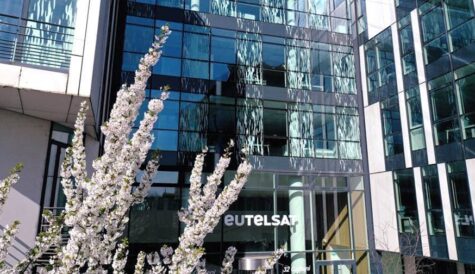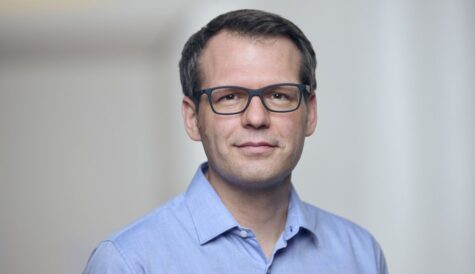
After more than 40 years of operation, DTVE is closing its doors and our website will no longer be updated daily. Thank you for all of your support.
25 years of broadband and pay-TV
To celebrate our 25th anniversary, Digital TV Europe invited a group of leading industry executives to take a look back to some of the highs and lows of the last quarter century.
Which event over 25 years had the biggest impact on pay-TV?
Giuliano Berretta, chairman and CEO, Eutelsat
The digitisation of the pay-TV market and the establishment of anchor satellite TV neighbourhoods over Europe have completely transformed the overall broadcasting industry. Before this, broadcasting in most European countries comprised flagship public and commercial national broadcasters, complemented by international analogue satellite channels fed into cable networks to boost choice. Digital satellite broadcasting has brought to the market an infinitely larger number of channels, along with quality and technology innovation. This story will continue to run as pay-TV operators diversify beyond standard digital into new premium offers including HDTV and VOD, with 3D already appearing on the horizon.
 Darren Childs, managing director, BBC Worldwide
Darren Childs, managing director, BBC Worldwide
The biggest impact has been the demand for more viewing choices from audiences, and the introduction of multichannel TV – especially digital platforms, which have brought that choice to audiences. The speed at which new entrants to the market seized on that opportunity was amazing. Watching incumbent free-to-air providers sit back and allow themselves to lose that exclusive relationship with audiences was also amazing to observe.
John Dahlquist, vice-president, marketing, Aurora Networks
Hybrid fibre coax infrastructures have had the biggest impact on the pay-TV industry in the last 25 years. Up until the mid-‘80s, networks were built specifically with coax, until HFC infrastructures opened the door to higher-capacity networks.
[icitspot id=”10268″ template=”box-story”]
Klaus Fuchs, managing director, TechniSat
Digitisation, beginning on satellite, was a breakthrough for pay-TV operators to enlarge their services in terms of size, quality – with HD – and services – VOD etc.. DTT was a new chance for new operators to start pay services on terrestrial networks and lead to a competitive market environment in the pay-TV environment.
Mathias Hautefort, president, Pace FranceBy far and away, I would say that the advent of DTH platforms has contributed most to the growth of the pay-TV industry. DTH services such as Sky saw an explosion in subscriber growth as the viewing public quickly understood how these kinds of services open up a whole universe of programming choice that had previously been unavailable. In a relatively short space of time we saw millions of viewers change their viewing habits through DTH and now these services account for a huge proportion of all subscribers globally. More locally, I’d have to say that France winning the World Cup in 1998 was not only great for the pay-TV business, but also gave us bragging rights for four years.
Linda Jensen, CEO, HBO Central Europe
First, the advent of commercial DTH broadcasting. Freedom from the need to lay cable in order to hook-up a household meant enormous growth for pay-TV providers and a boon for potential subscribers who were not in a well-cabled area. In central Europe, the DTH boom of recent years has paved the way for a very robust industry. Second, the development of the multiple screen concept, which has changed the way programmers and subscribers think.
Laurent-Eric LeLay, CEO, Eurosport
I think it would have to be the Premier League. The Premier League drove the initial mass take-up of pay-TV in the UK – almost single-handedly. It was the property that legitimised paying for TV among the British population, and it kick-started the satellite era.
Kevin MacLellan, president, Comcast International Media Group (CIMG)
The launch of DTH, which created competition for the cable companies and initially increased the number of channels that could be delivered to the home.
[icitspot id=”10283″ template=”box-story”]
Noel Matthews, vice-president, business development EMEA and APAC, Tandberg Television
Digital transformation. This made it cost-effective to greatly expand multi-channel offerings on satellite and cable. Digital TV channels required only a fraction of the bandwidth of analogue channels and they also provided a consistent picture quality for all viewers.
Gene Musselman, president and chief operating officer, UPC Broadband
The foundation of multichannel TV by the real pioneers in the business goes back to the mid-’70s when Ted Turner’s Atlanta station WTCG, HBO and Time Warner teamed up to use satellite to reach a national footprint. In the case of HBO, they planned to launch a pay-TV subscription movie service, while Turner’s intent was to turn his regional station into a national ad-supported service and to convince cable operators to pay a per-subscriber fee of around ten cents per month. Up until that moment, cable operators were mainly in the re-transmission business, carrying about a dozen off-the-air channels, and were desperate for more valuable content to grow their subscriber base and increase their revenues.
David Price, vice-president of marketing, Harmonic
The creation of conditional access enabled the widespread adoption of pay-TV services, and the continuing development of security as a means of protecting revenue.
Duco Sickinghe, CEO, Telenet
The TV world going digital – 25 years ago we had no idea what digital TV was or how it could look like. Ten years ago, in general, broadcast TV remained primarily analogue. Today a huge amount of consumers worldwide receive programming via set-top boxes enabling them to experience high quality SD and HD programming. This evolution changed deeply the traditional TV industry and has impacted the complete media value chain. Audiences are looking for new ways to consume and interact with content and are becoming more and more participants. They also have far more choice than ever before.
Brian Sullivan, managing director, customer group, BSkyB
From a UK perspective, the biggest single impact was the birth of digital. Digital has provided a real foundation for innovation and has supported a significant expansion in choice, quality and control. Where pay platforms have led, a range of free-to-air platforms have belatedly followed. From the birth of multichannel TV and the choice it delivered, to the inception of interactivity, PVR and HD, digital has changed the way we watch TV forever. And the migration to more choice and better quality sound and pictures have all been instrumental in supporting the growth of pay-TV.
What was the most surprising development of the last 25 years?
Giuliano Berretta, Eutelsat
The major shifts in the broadcasting landscape in central and eastern European markets are a striking development of the last 25 years. From the early ‘90s these markets have leapfrogged technology breakthroughs, embraced multichannel and new channel concepts, innovated with new compression including MPEG-4, and adopted HDTV at a comparable pace to western Europe. Historically, these countries have enjoyed relatively high cable penetration. However, it has been through satellites that the market for pay-TV has really boomed, with the number of subscribers to satellite-delivered pay-TV platforms tripling over the last two years.
Darren Childs, BBC Worldwide
Certainly in Europe, it was how quickly the US media companies saw and seized the opportunity, and were prepared to invest heavily, in platforms, channels and content. Also the BSB/Sky merger, which had the knock-on effect of triggering a wave of DTH consolidation across Europe, drawing the battle lines between DTH and CATV still prevalent today. This led to huge investment in broadband connectivity and of course PVRs and non-linear viewing, which has changed audience viewing habits more than any other single technological development.
[icitspot id=”10302″ template=”box-story”]
John Dahlquist, Aurora Networks
About 15 years ago, deregulation in Europe required that telcos sell their cable networks, opening the door for cable operators to provide high-speed data and telephony services in what was previously the domain of the telcos. Ironically and surprisingly, telcos are now looking to get back into the game to take back a piece of the video pie.
Klaus Fuchs, TechniSat
The speed and number of innovations which came to the market once the digitisation process has started. New operators with new service and business models – like ITI in Poland with HD-only content – started from scratch. Digitisation brought a major push to all participants in the pay-TV industry – content providers, operators, hardware manufacturer for headend and reception equipment, CA vendors and middleware providers.
Mathias Hautefort, Pace
The arrival of digital TV over ADSL has changed the dynamic of TV to a large extent. The ability to receive TV over copper has prompted a range of innovation in products and services to consumers and has given TV a whole new dimension beyond the TV set. Some of the businesses that were among the first to market with ADSL services including BT, PCCW, Fastweb in Italy and Orange have helped to place data and broadband connectivity at the heart of a converged TV experience.
Linda Jensen, HBO Central Europe
While many people moan about piracy in our region, one of the most surprising things to me about pay-TV in central Europe is how relatively under-control piracy is. This is not to say that the amount of piracy existing is acceptable, but many of us are able to make a good business out of pay-TV in a rather difficult region. We owe a thank-you to the technical world for this, as encryption and conditional access improve, and another thank-you to the operators who are so receptive to our discussions about improving systems and controls. We are nonetheless greatly anticipating the changes that more digital cable will bring.
Laurent-Eric LeLay, Eurosport
The rapidly expanding pay-TV industry in central and eastern Europe, which is now the number one region for Eurosport. The pay-TV market in this diverse and dynamic region has over the years been driven by the competitive, entrepreneurial spirit of early cable operators looking to gain market share, followed by the development of digital DTH platforms and recently by IPTV operators and telcos willing to defend or strengthen their positions in fixed line and internet by offering additional pay-TV services. It remains very buoyant and in some eastern regions the average daily consumption of TV – sport especially – is increasing as compared to western zones, while broadband penetration is still relatively low.
Kevin MacLellan, CIMG
The Merger of AOL and Time Warner.
Noel Matthews, Tandberg Television
The dramatic increase in the financial value of premium content like sports, which I suppose reflects the value of content to pay-TV platforms. Without premium content they would have to pack their bags and go home.
Gene Musselman, UPC Broadband
I’d say the most surprising element would be the pace at which the competition has developed in the last few years particularly in central and eastern Europe. I have been active in that area for some time now. After the fall of the Berlin Wall in the 90s, the region opened up and we began our first systems there. In the years thereafter, many investors followed our footsteps and we see many new platforms, sometimes leading to an irrational level of competition. For DTH only we see five Romanian, four Polish and four Hungarian operators – too many in my view. A number of them will not survive long-term. I think we will see consolidation in the near future.
David Price, Harmonic
To me the most surprising development was the length of time that certain technology vendors were allowed to enjoy a duopoly in the US. It was amazing – and not just to other technology providers – that the operators allowed it to continue for so long.
Duco Sickinghe, Telenet
Studio inertia was the most surprising development. With the digitisation of TV and the rise of new digital TV platforms and services it is surprising that studios have moved so slowly to grow their own channel businesses and are clinging to and protecting their traditional businesses and distribution models. Most changes occurred in the on-demand area with the introduction of television on-demand and subscription video-on-demand models.
Brian Sullivan, BSkyB
Over the years, numerous commentators have claimed that pay-TV had reached saturation point. I’ve lost count of the number of times I’ve heard it said that Sky had already signed up everyone who would ever be interested in paying to extend choice. Yet even in light of the expansion of the free-to-air offering, pay-TV has continued to grow, and now almost every other home in the UK takes a form of pay-TV. This sustained, steady growth has been remarkable. Year in and year out, more and more people have shown themselves inclined to pay to improve their TV experience. And the reason for this is that the pay-TV industry embraces change and responds to the changing demands of consumers.
Which has been the most innovative service provider?
Darren Childs, BBC Worldwid
The whole sector is very innovative, but BSkyB has shown its ability to back itself with investment in digitising the network and increasing choice, as well as providing TV on its audiences’ terms with Sky Plus.
John Dahlquist, Aurora Networks
Cable operators and service providers, as opposed to telco or satellite service providers, have had the most significant impact on key services that consumers are demanding today – the full triple-play package including video-on-demand and live HDTV.
[icitspot id=”10298″ template=”box-story”]
Mathias Hautefort, Pace
In the last 25 years we have moved from analogue TV and as many channels as you can count on one hand to hundreds of channels offering a wealth of digital content to suit every individual taste. The service providers that have excelled have been those that have developed their programming offering to keep up with the times but who have also improved it in terms of quality. It’s difficult to pick out a single most innovative service provider but for its bold forward thinking approach I would have to highlight the contribution of Canal Plus.
Kevin MacLellan, CIMG
BSkyB, because despite substantial technical limitations – no return path – they have created innovative ways to provide subscribers with robust added-value services. Their red button interactive TV services are some of the best I have seen in the world.
Noel Matthews, Tandberg Television
US cableoxes were still extremely expensive at the time so it did not scale, but it proved the power of the concept.
Duco Sickinghe, Telenet
Comcast for pioneering with VOD. And of course Telenet for giving the HBO-type partnership model a completely new dimension by introducing a business model for VOD, in partnership with broadcasters. On the other hand, with our own pay-TV channel Prime we changed the traditional linear pay-TV approach. We introduced the ‘start-over’ feature, an interactive application that allows viewers to start over movies via the red button on their remote control in a very easy way.
Darren Childs, BBC Worldwide
In the UK, the BBC, which has led the way on technology and audience innovation. Globally, without doubt, it has to be News Corp. Its belief in platforms and multichannel around the world is beyond compare.
Mathias Hautefort, Pace
There are so many doing great things which vary from region to region and across pay-TV platforms. In the UK you have Sky in the satellite space, Virgin for cable and BT with its joint IP/ terrestrial service. DirectTV in the US has also been instrumental in driving satellite services and the concept of pay-TV generally. All of these operators have great customer offerings and approach the market with their own set of innovative features. Here in France, Canal Plus has paved the way for style and innovation with its +LeCube set-top box for example, whereas Viasat in Scandinavia has deployed impressive HD PVR boxes to its subscribers. My answer in summary would have to be that those broadcasters and service providers who innovate and who push the boundaries of pay-TV forward in terms of technology and the TV experience are those that impact the industry most.
Laurent-Eric LeLay, Eurosport
I think BSkyB has consistently set new standards. Sky Plus is a fantastic product that revolutionised viewing habits for millions. They were also an early adopter of HD, and they have also made the triple-play idea possible – TV, mobile and broadband – from one supplier. They then diversified into interactive betting with Sky Bet. One key factor in Sky’s success is that at each stage of their innovation they have succeeded in creating simple but powerful marketing messages that put the customer at the heart of the innovation.
Noel Matthews, Tandberg Television
For the UK it is BSkyB because they drove the growth of pay-TV and digital TV. News Corp. had the foresight to secure technology like conditional access and compression and leverage the advantage of digital technology and get platforms on air around the world. They also realised the value of content and secured content deals to make their platforms successful.
Gene Musselman, UPC Broadband
CNN for sure. In 1980, Ted Turner launched CNN and revolutionised the concept of 24-hour news. A couple of years later came CNN2, a channel with a 30-minute cycle for headline stories. After Turned launched CNN, he struggled to keep it alive for a number of years. That changed in 1991 with CNN’s on-scene coverage of the Iraq War, Desert Storm. It was this single event that established CNN in the eyes of the world and provided the foundation for being one of the most trusted news organisations in the world.
[icitspot id=”10299″ template=”box-story”]
David Price, Harmonic
I believe the broadcaster that stands out is HBO for its pioneering work on encrypted content, which was essential to the survival of the emerging pay-TV industry.
Duco Sickinghe, Telenet
HBO because of the HBO partnership model. HBO was not an instant success but in the first cable deal they closed, they defined the future agreements between cable operators and pay-TV networks. HBO would offer the programming; the cable operator would take care of the channel and billing services. They both agreed to share the marketing costs and split the revenues. Operators had an incentive to sell the service. The model still stands today and really linked the future of operators and programmers together. What helped the success of HBO as well was that they understood the power of selling subscription services at a time where selling programming on a pay-per-view basis was the conventional wisdom. Of course HBO today is also all about good quality content, uninterrupted in its original version. They invested in original programming – Sex and the City, The Wire, The Sopranos – showing that a pay-TV service is more than just re-running movies. Second place? MTV and/or Discovery for exploiting the global opportunity.
Where would you invest €1m today?
Darren Childs, BBC Worldwide
€100m would make this more interesting! I’d do two things. I’d buy stock in Telenet, which is in my view one of the best-run MSOs in Europe. I’d also invest in any company that is working on targeted advertising solutions to make buying media a more empirical and efficient business than it currently is. One-to-one, versus one-to-many, has to be the way to grow overall TV advertising.
John Dahlquist, Aurora Networks
With €1m, my focus would be on extending network capacity with a cable operator. It has been proven, many times over, that an operator can never have enough bandwidth!
[icitspot id=”10300″ template=”box-story”]
Klaus Fuchs, TechniSat
I would split my investment in some main players across the complete chain of making pay-TV available, starting with a major satellite operator like SES Astra, followed by a dominant manufacturer of headend equipment, for example Harmonic, or CAS vendor like NDS, a broadcaster hit by the crisis but having a good business perspective – Sky Germany – and finally a major hardware manufacturer – TechniSat Digital Group.
Mathias Hautefort, Pace
Aside from buying €1m worth of shares in Pace, I’d put my money into technology that delivers a more joined-up TV experience for consumers. This could range from home networking technology to hybrid solutions to software applications that transform the EPG – in fact, many of the areas that Pace is highly active in at present.
Linda Jensen, HBO
I would invest in anything that moves content to a personal viewing device faster. In my ideal media world, you would be able to point and click your personal viewing device at any screen anywhere – whether in London, Budapest, New York – and download whatever show was on in a few seconds. I truly believe that a seamless ability to move content around from one device to another will be a key factor in our future success. Personally, I don’t get to view anything if it doesn’t make it to my iPod and I am completely addicted to walking around with a few seasons of something in my pocket!
Laurent-Eric LeLay, Eurosport
I would invest in online betting. I think betting offers a more entertaining and engaging way to enjoy sport and events. When you bet on a match your involvement is much higher and, as a result, emotions are stronger. Betting is a natural extension of our on-air and online sports offer, and allows us to leverage the power of the Eurosport brand. This is the best time to invest in betting because European online gambling regulations and legislation are opening up, which could potentially generate high market revenues in the countries. Betting is also a great example of diversification and how we can create new online revenue streams, apart from advertising.
Kevin MacLellan, CIMG
Developing content and/or applications for multi-platform distribution. I believe that in the short to medium term no one distribution platform will emerge as the dominant provider of entertainment. Therefore, the best thing to do is to create content that is platform agnostic and seek the broadest distribution possible.
Noel Matthews, Tandberg Television
I would invest it in India or China and look for an innovator that knows how to leverage TV as part of a wider communications strategy. There are companies with 100 million mobile subscribers who want to convert them into pay-TV customers. There are traditional TV services in those countries but the market for next-generation TV is largely untapped.
[icitspot id=”10301″ template=”box-story”]
Gene Musselman, UPC Broadband
Our industry has always had its own cyclical growth patterns. I believe in our industry and the fundamentals of cable TV. Our industry is undervalued at this time so this would be a good moment to step in again and invest in well-performing cable companies.
Duco Sickinghe, Telenet
To make life easier for the TV consumer. I would invest the money in the development of simpler, unique remote control for TV, to give consumers an even more simple access to their interactive digital television experience. Or maybe even better, no remote control at all and by gesture. Somebody else is doing just that today!
Brian Sullivan, BSkyB
It might sound like a bit of a cliché, but as an entertainment company, there’s no substitute for content. Despite the proliferation of new technologies and platforms, the demand for high-quality content from consumers remain constant. Pay-TV will continue to differentiate the experience which supports programming. If we look to the UK as an example, it was pay that supported the move to digital, mass-market penetration of PVRs and the birth of high definition. But an enhanced, richer experience is only of value if there is quality programming to showcase. That’s why for Sky, our commitment to product and service innovation is matched by our investment on-screen.


